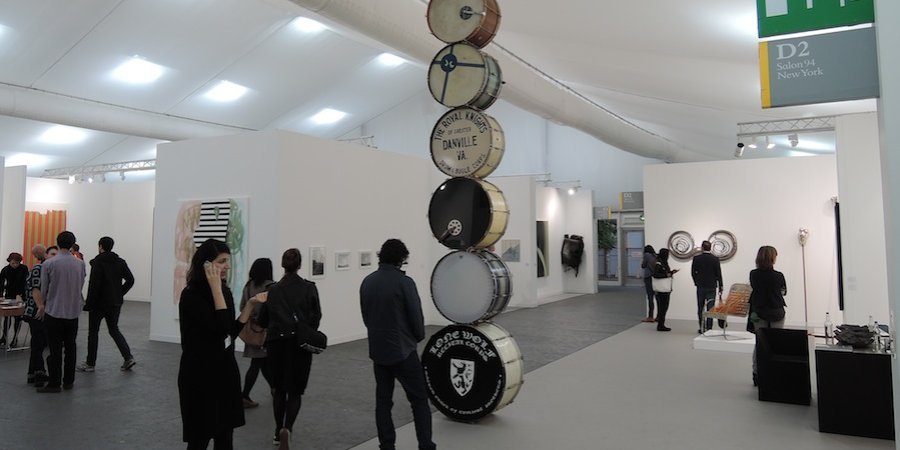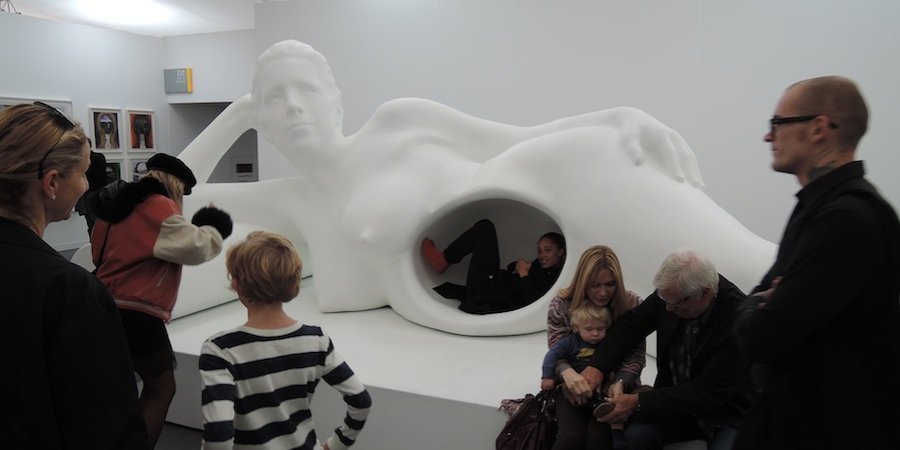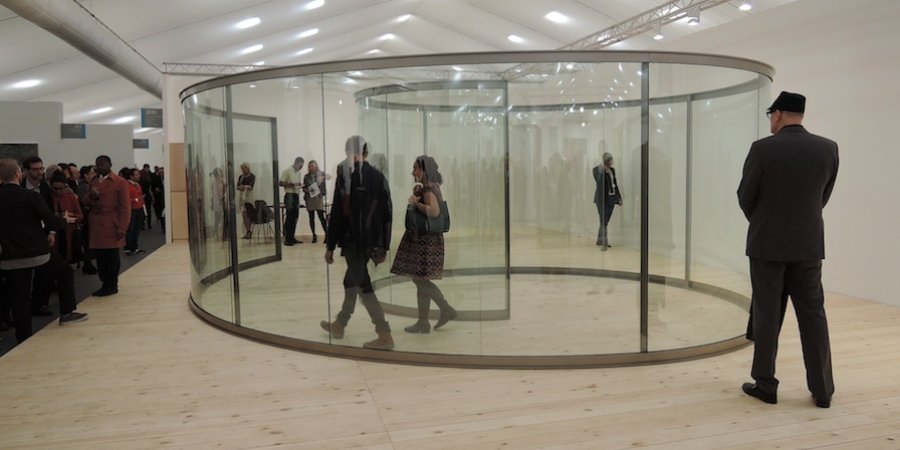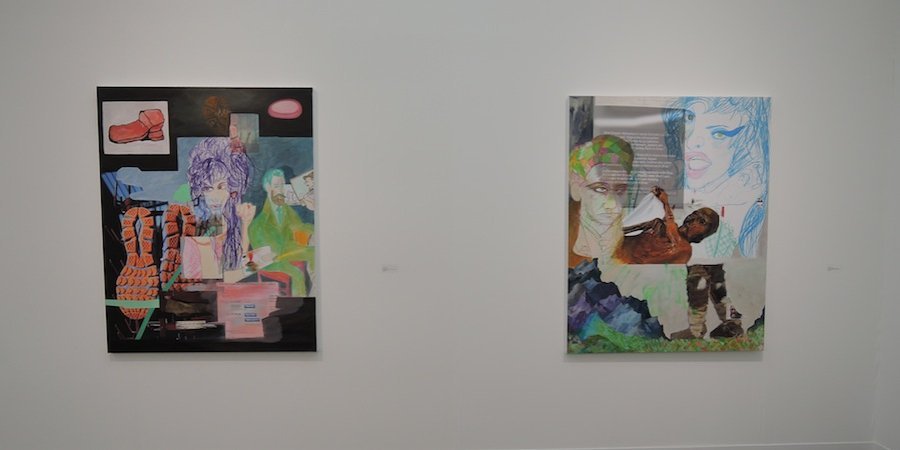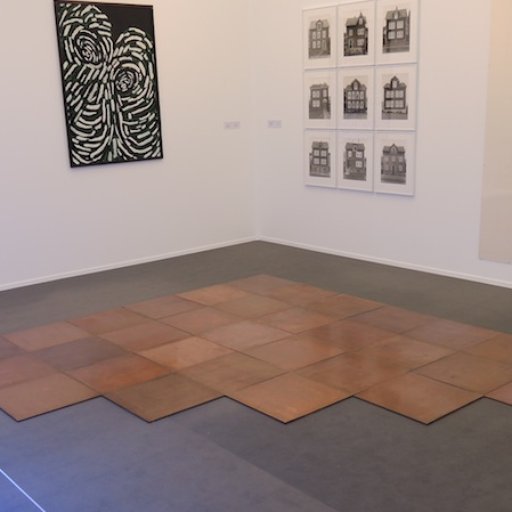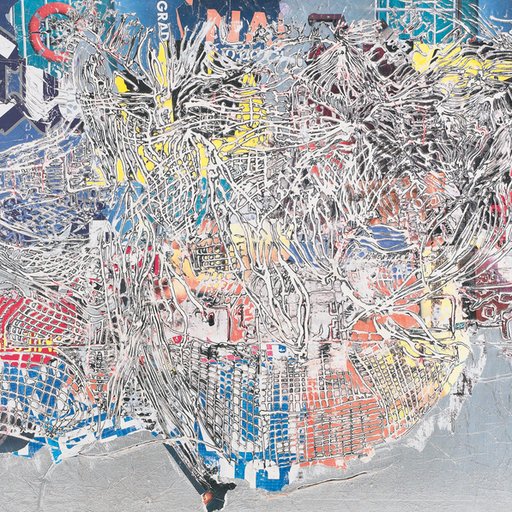Do you feel numbed by having come across the same artworks by the same artists in galleries, art fairs, and auctions year after year, with the only variation to be found in the continually rising prices? In other words, are you suffering from contemporary art ennui? Frieze London will cure what ails you. Distinguished by both its hip zest for novelty and aristocratic emphasis on taste and connoisseurship, the curated fair was replete this year with mind-expanding presentations that focused on surprising work from famous artists, electrifying pieces by forgotten trailblazers, and transfusions of cutting-edge art from other pockets of the world. The dealers, it would appear, were tired of business as usual as well.
For instance, one artist whose name is sure to start coming up more often is Terry Adkins. A professor at UPenn'sSchool of Design, the 60-year-old black sculptor had a tall 2003 sculpture of stacked drums at Salon 94's booth—titled Muffled Drums (from Darkwater)—that commemorated a silent Civil Rights march. Slightly shortened by five drums due to Frieze's low tent this year, the piece still captured the attention of the Tate, which swiftly acquired it for the museum's collection using the majority of its annual £150,000 Outset/Frieze Art Fair Fund. The artist, who hasn't been represented in New York for 15 years, has just signed with the gallery, as has his former student Jayson Musson (also showing at Salon 94).
Sam Gillian, an overlooked African-American artist from Washington, D.C., who was the standout discovery at David Kordansky's booth, where one of his gorgeous 1970s stained abstractions—made years before David Hammons began making his famed stained pieces—was on display.
Another breath of fresh air could be found blowing in from China at the booth of Beijing's Long March Space, which was showing edgy work by young Chinese artists. One of them, the Shanghai wunderkind Xu Zhen, is already on his way to stardom in the West thanks to his selection as the Armory Show's 2014 commissioned artist, the highlight of the New York fair's upcoming Chinese focus section curated by Phil Tinari. His digitally remixed photo-painting, incorporating bits and pieces of previous works that the artist had destroyed, was one of the most idiosyncratic and illuminating pieces at the fair. Sculptures by Zhan Wang and works by Liu Wei also heralded new talents from the underexposed Chinese art scene, which few Western collectors are familiar with beyond the '90s cynical realists and megastars like Ai Weiwei and Cai Guo-Qiang. Wang and Liu will both gain greater visibility stateside when they are included in the Rubell Collection's group show of Chinese artists during Art Basel Miami Beach.
Abstract paintings, indeed, were big at Frieze this year—and the paintings themselves were often huge. This was certainly the case with the Water Lilies-sized canvas by Ida Ekblad at Herald St. Gallery (sold for $70,000), the poison-yellow Sterling Ruby abstraction at Hauser & Wirth (sold for $550,000, and joined by an equally jumbo Mark Bradford in the same price range), and the paintings by overnight star Oscar Murillo at David Zwirner Gallery. Another gargantuan canvas of particular interest could be found at Peres Projects, where dealer Javier Peres was jazzed about a colossal painting by Mark Flood from a new series taking the tiny online logos of major corporations and then using an industrial billboard printer to blow them up into barely recognizable fields of colored pixels. Standing about eight feet tall and priced at $65,000, the piece is not for small apartments.
The most enormous of the abstractions, and among the most intriguing, were at the booth of Berlin's Contemporary Fine Arts. Taking up the bulk of each wall, these heroically gestural canvases incorporated text and found objects with vigorous, raw brushstrokes, seeming to echo the paintings fueling Murillo's ascent and the acclaimed work of Sergey Jensen. However, they were by Julian Schnabel—and painted years before the other artists' contributions. "The art world suffers from a very short memory," said the gallery's Nicole Hackert. "That was part of the idea why we wanted to show these—to refresh people's memory." Schnabel is "absolutely having a renaissance," she added, pointing to the artist's solo show at the Brant Foundation next month. The biggest of the paintings on offer, the 11-foot-tall The Conversion of St. Paolo Malfi from 1995, sold for around $500,000.
More painterly surprises could be found from other brand-name artists, like Rachel Harrison, whose brushwork was long restricted to her messily colorful sculptures but who now was debuting a new body of digital collage paintings at Galerie Meyer Kainer. Containing her signature mix-and-match jumble of cultural references—Kippenberger, Amy Winehouse, Gertrude Stein, an ancient mummy—and feisty color sense, the paintings resembled continuations of her sculptures by other means (to paraphrase Carl von Clausewitz). Then, back at Hauser & Wirth, Paul McCarthy had a large and goopy profanity-laced canvas with a pair of Disney figurines perched with Beckettian anomie on the top right corner—his first painting in 20 years, it sold during the VIP preview for $750,000.
Major sales seemed to be pinging up across the tent, in fact, though some dealers groused about the fact that this year's VIP invitations were cut almost in half, from 700 to 400, in order to create a more relaxed, uncrowded vibe—decreasing the pocket-filling spirit of frenzied competition as a result. However, other dealers who hoped to impress and educate through their curation were fine with the slow pace. Standard Oslo, for instance, came into the fair planning to change out its entire display three times over the course of the week, regardless of what sold. On the first day, their booth was dominated by a Matias Faldbakken sculpture of metal antennae strewn with ribbons of white toilet paper, priced at $120,000.
"We always try to bring something that animates the booth even if we can't sell it," said the gallery's Asgeir Skotnes. "Frieze gives us a chance to do something like this, where you don't instantly know what you're looking at, and it needs time to sink in. We use the art fair as a platform to show what we do in our gallery space, because not everybody comes to Oslo—so we want the presentation to be as good as it would be in our gallery." This kind of market-agnostic sensibility, often felt at Frieze, may have been one of the reasons it felt like such an artist-friendly fair, and indeed a large number of younger artists could be found walking the aisles, including Dan Colen, Kon Trubkovich, N-Dash, Brendan Fowler, and Andrea Longacre-White (who had a solo presentation on view).
In this way, the spirited tempo of Frieze London was a world apart from the settled, art-historical tone of Frieze Masters across Regent's Park, where masterpieces by everyone from Archimboldo and José de Ribera to de Kooning and Gordon Matta-Clark felt pulled from museums. ("Luxe" is how gallerist Anthony Meier described the atmosphere there: "Your work is being shown next to Brueghels. It's the best of the best.") But it was notable that both fairs showed signs this year of a market hunting in the past—both recent and ancient—for attention-grabbing new wares to sell, as evidenced in the contemporary section with Adkins, Schnabel, and the rest.
"It's a really interesting time when it seems there are two directions that are very important to galleries, and one is looking at younger, up-and-coming artists and the other is looking at older artists who haven't gotten the recognition they deserve," noted San Francisco dealer Jessica Silverman. "These fairs have great opportunities for both collectors and for gallerists like myself who are looking to brush up. It's an exciting moment."












